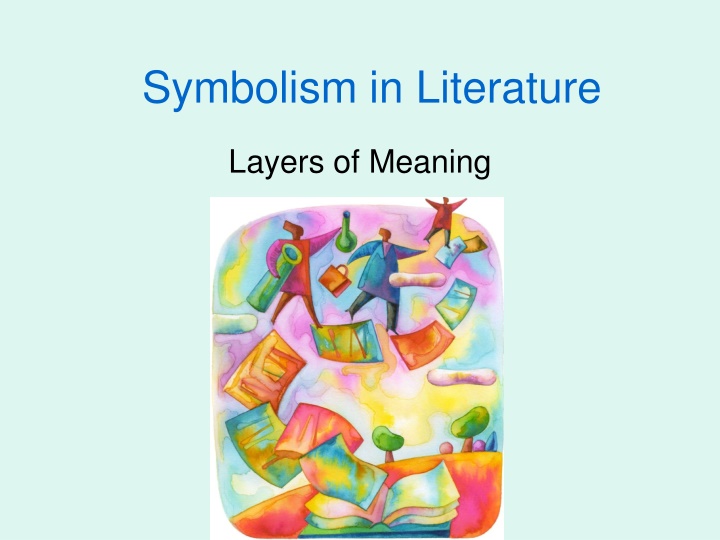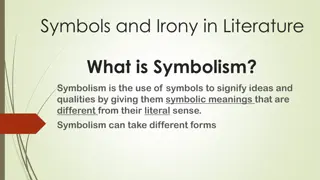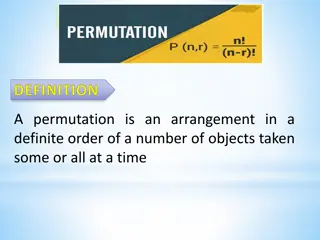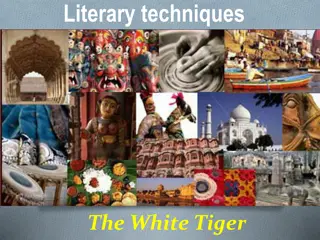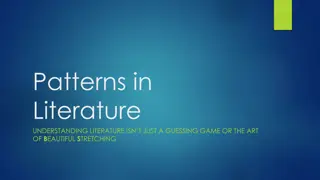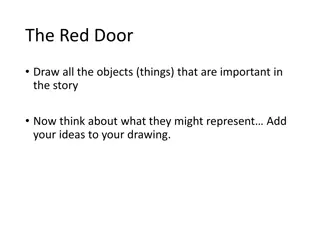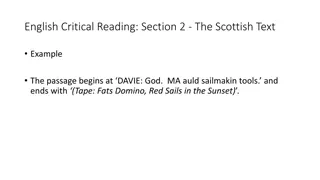Unveiling Symbolism in Literature: Layers of Meaning through Objects and Concepts
Explore the depth of symbolism in literature as ordinary objects and symbols take on extraordinary significance. Discover how symbols represent a country, love, power, and more, delving into inherited and invented symbols that enrich storytelling with nuanced meanings across cultures and time periods.
Download Presentation

Please find below an Image/Link to download the presentation.
The content on the website is provided AS IS for your information and personal use only. It may not be sold, licensed, or shared on other websites without obtaining consent from the author.If you encounter any issues during the download, it is possible that the publisher has removed the file from their server.
You are allowed to download the files provided on this website for personal or commercial use, subject to the condition that they are used lawfully. All files are the property of their respective owners.
The content on the website is provided AS IS for your information and personal use only. It may not be sold, licensed, or shared on other websites without obtaining consent from the author.
E N D
Presentation Transcript
Symbolism in Literature Layers of Meaning
What Symbols Stand For A symbol is often an ordinary object, event, person, or animal to which we have attached extraordinary meaning and significance.
We use a rectangle of dyed cloth to symbolize a country.
We use a picture of a skull and crossbones to symbolize poison or danger. We send red roses as a symbol of love.
Where Do Symbols Come From? Symbols can be inherited or invented. The most familiar symbols have been inherited; meaning they have been handed down over time
What does the lion represent? Lions are a symbol of power, courage, and domination The lion became a public symbol that shows up in art and literature, even today! Once these qualities were associated with the animal, images of lions appeared on flags, banners, coats of arms and castle walls
People throughout history have endowed ordinary objects with meanings far beyond their simple meaning: Five linked rings symbolize the Olympics A crown symbolizes royalty An olive branch symbolizes peace
Invented Symbols Writers often take a new object, character, or event and make it the embodiment of some human concern. What is the symbol for our school? Some invented symbols in literature have become so widely known that they often have gained the status of public symbols. For example: Peter Pan is a symbol for eternal childhood
Why Create Symbols? You may ask why writers don t just come right out and say what they mean. Symbols allow writers to suggest layers and layers of meaning-possibilities that a simple, literal statement could never convey. A symbol is like a pebble cast into a pond: It sends out ever widening ripples of meaning
Symbols have multiple interpretations. Depending on the context, cultural meanings, and personal experience, symbols may carry different meanings. You may not be able to articulate fully what a certain symbol means, but you will always find that the symbol will speak to your emotions and to your imagination. You may also find that you will remember and think about the symbol long after you have forgotten other parts.
What is Symbolism? Symbolism is an ordinary object, event, person, or animal to which we have attached extraordinary meaning and significance.
